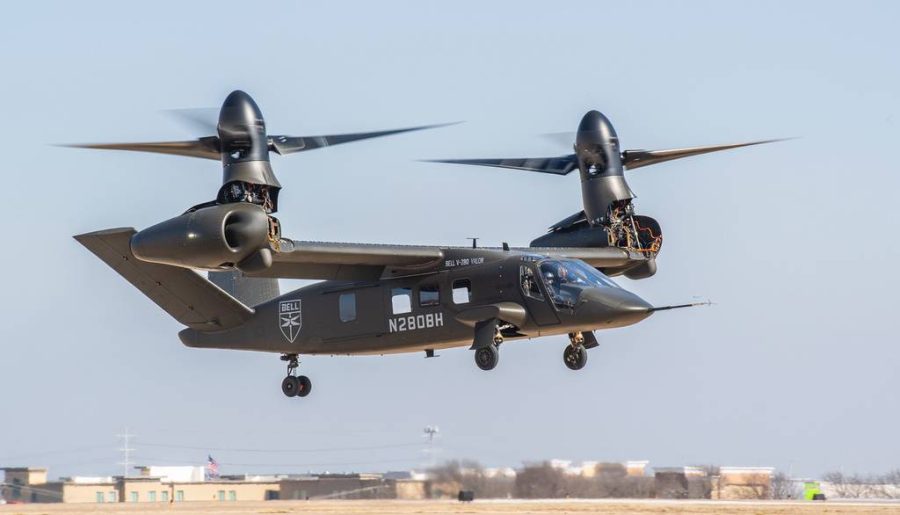Hey little bird, fly away home!
The new tilt-rotor vehicle aims to quickly pick up where its predecessor left off.
A Bell V-280 “Valor” tilt-rotor aircraft undergoing final performance tests with the U.S. Army’s Joint Multi-Role technology demonstration program.
December 21, 2022
On Dec. 5, the United States Army announced the winner of their new helicopter replacement competition: the Bell V-280 “Valor.”
Bell was granted a $232 million contract the same day, with the first instalment of said contract possibly being a $7.1 billion deal for the development of the aircraft as well as an initial batch of the aircraft, according to DefenseOne. This is a massive triumph for Bell, owned by American industrial conglomerate Textron, as the entire deal could be worth $70 billion in the coming decades based upon how many aircraft the U.S. and other armies procure.
“For Textron, it is a generational win that rejuvenates Bell’s military franchise,” Cowen analyst Roman Schweizer stated in a note to investors on Oct. 12.
The Bell V-280 is an aircraft designed in a similar fashion to the preexisting Bell V-22 “Osprey” that is currently in service with the U.S. Marine Corps, Air Force and Navy, as well as the Japan Ground Self-Defence Force (JGSDF). It beat out a Sikorsky/Boeing developed coaxial helicopter concept, which utilized two contra-rotating rotor blades that aimed to provide more stability compared to conventional helicopters. The V-280, much like the V-22, possesses a tilt-rotor design by which the propellers can rotate upward to function like a helicopter, but tilt forward to function as a traditional aeroplane.
“The V-280’s unmatched combination of proven tiltrotor technology coupled with innovative digital engineering and an open architecture offers the Army outstanding operational versatility for its vertical lift fleet,” Bell proclaimed in a statement emailed to DefenseOne.
The V-280 aims to replace the U.S. Army’s ageing fleet of Sikorsky UH-60 “Blackhawk” utility helicopters, which first entered service in 1979 during the invasion of the Caribbean island of Grenada by U.S. and coalition forces. However, the contract awarded to Bell on Dec. 5 is for what Army officials refer to as a “virtual prototype,” not a physical one. They added that an initial prototype could debut in 2025, but supplemental contracts would need to be awarded prior to this occurring.























